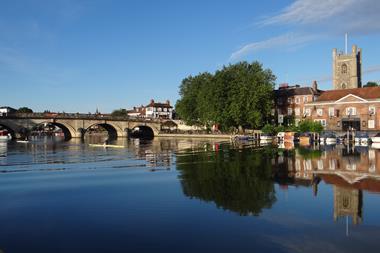
A visit to Dinosaurs in the Wild is about as close to a real life Jurassic Park experience as you’re going to get – so don’t miss out, advises GLT’s Rachel Bailey.
I don’t know about you, but travelling back in time to the Cretaceous Period to a dangerous environment where dinosaurs ruled the world has never been at the top of my bucket list. Dinosaurs in the Wild, however, did just this (albeit in a way that ticks every health and safety check box available) and I can only say that I enjoyed myself immensely.
To be guided into a simulator that throws you 65 million years into the past to experience, via amazing CGI footage, what a land dominated by dinosaurs would have really been like is an experience like no other.
Plus I learnt a heap of information about dinosaurs. Did you know that an Ankylosaurus egg might have weighed 2kg? Or that herbivores could have seen 180 degrees around them, while predators would have seen straight ahead? I discovered this by sticking my head into a dinosaur model that uses virtual reality to show you how dinosaurs would have seen.
It’s elements such as these that make Dinosaurs in the Wild, the latest attraction to open at the NEC, so engaging. And when you also factor in features like being able to feel dinosaur poo, test your strength against that of a T-Rex and watch a live dinosaur autopsy, it’s little wonder that the creators are already considering expanding the experience to London and even other (as yet unannounced) countries.

Pictured: The claw of a Tyrannosaurus Rex.
What exactly is Dinosaurs in the Wild?
It’s an immersive theatrical experience that uses computer-generated imagery and animatronics to create the impression of a believable prehistoric world. As a visitor, your aim is to explore the recreated world and learn about its inhabitants, plus escape unscathed, with the help of a friendly tour guide.
Dinosaurs in the Wild opened at the NEC in Birmingham at the end of June, where it will remain until 23rd August, before transferring to EventCity in Manchester from 7th October until 7th January 2018.
Its creative director, Tim Haines (also the producer of BBC series Walking with Dinosaurs), describes it as a live-action experience.
“If you imagine that Walking with Dinosaurs was a natural history program, then the live event was more of a circus. Dinosaurs in the Wild, however, is the safari,” he commented.
In a nutshell – and without giving too much away – your visit to Dinosaurs in the Wild begins with a jump back in time, followed by a spectacular dinosaur-spotting ride across prehistoric plains, then a tour of the Time Base building where the study of dinosaurs is key.
Along the way you’ll visit different parts of the Time Base, including a room for nocturnal creatures, where torchlights are swung over unnerving mammal animatronics; the egg hatchery, where visitors can see baby Triceratops squirming inside their shells; and the autopsy room, where you can expect to see a live autopsy that includes an in-depth examination of the brain, digestive system and mouth of a Pachycephalosaurus.

Pictured: An autopsy of a Pachycephalosaurus.
Your journey ends on an exhilarating high that involves running through tunnels under a lake that’s home to a Mosasaur in a race against time (and dinosaurs) to get back to the present day. Overall the experience is 70 minutes long.
CGI footage: the real highlight
The most impressive element of Dinosaurs in the Wild, for me, is the CGI footage that shows the abundance of different dinosaurs that would have lived in the Cretaceous Period.
At several points along your journey, you’ll get to ‘look’ out of windows with 3D glasses on, to observe what appears to be real-life Thescelosaurus, Quetzalcoatlus, Tyrannosaurus Rex, and Ankylosaurus (plus many more). The quality and diversity of the scenes unfolding before you will have you completely drawn in.
A Quetzalcoatlus flying over the Time Base, a female Alamosaurus casually crossing the grassy plains, a Triceratops running alongside a vehicle that you’re sat in – all of these things become normal as you’re drawn into the recreated world.
“Everything is designed to make you think that the screen of the monitor is glass of a window,” said Haines. “The moment you take that on board then instantly you’re walking around inside a greenhouse with dinosaurs all round you.”

Pictured: Rachel at Dinosaurs in the Wild.
Who can go?
No matter what your age, Dinosaurs in the Wild is suitable, and definitely entertaining. Saying that, I think groups with younger children will benefit from a visit the most. This is because of the educational factor that’s been factored in to the creation of the experience. Haines points out that everything has a scientific basis as well as being entertainment.
“Educationalists have been working on this for a few months,” says Haines. “It’s not just about dinosaurs… it’s using the experience to fire off different disciplines in education.”
The fact that you experience Dinosaurs in the Wild with a tour guide who’s in character also makes the experience very accessible to children.
Overall, I’d really recommend Dinosaurs in the Wild. It’s different, it’s daring, it has evidently cost a great deal to create, and more than anything it’s a fun escape from reality. Add it to your 2017 group travel bucket list – go on, I dare you.
Group bookings
Group rates are available for both the NEC and EventCity. For NEC, Birmingham group bookings, call 0800-358 0058. For EventCity, Manchester group bookings, call 0844-412 4650 or e-mail groups@seetickets.com.
For further information visit www.dinosaursinthewild.com.












